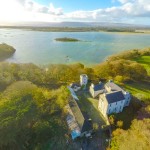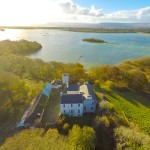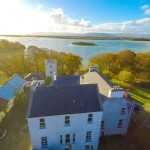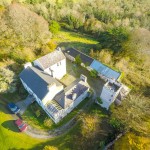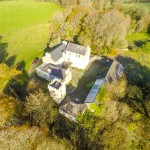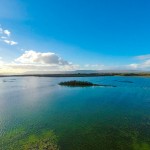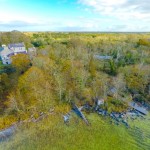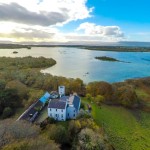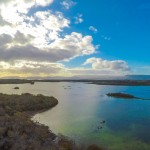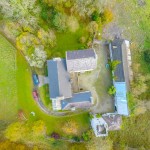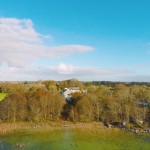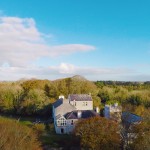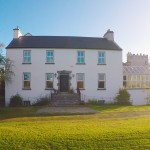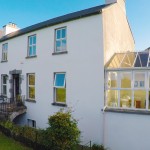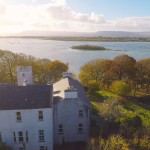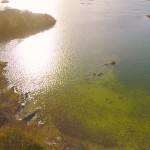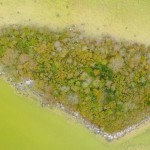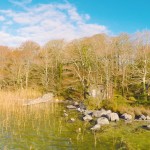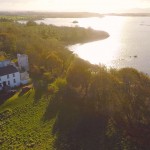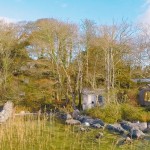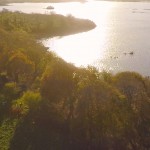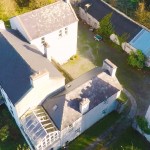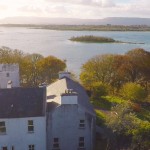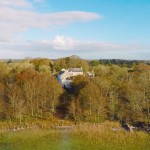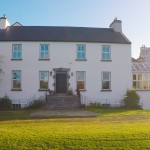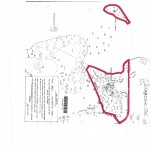Cloonee House, Lough Carra, County Mayo. SOLD.
Eircode: F31 V229
Superb, Historic property its own Lake Island on approx 10 acres, located in a most picturesque location with extensive frontage onto the shores of Lough Carra, County Mayo,
The Property comprises:
Extensive Period Property with the following Accommodation:
Entrance Hall, Dining Room, Conservatory, Kitchen, Drawing Room, Ball Room:
Upstairs: Five Bedrooms, Two bathrooms. All with fine period features and fabulous lake views.
West Wing of House; Separate Entrance: Living room, Bedroom, Bathroom, Kitchen.
East Wing of House; Separate Entrance; Living Room, Two Bedrooms, Bathroom, Kitchen.
Extensive Garden Level/ Basement area with potential for renovation and development.
Externally there is a charming Courtyard area with the following;
“Wilde’s Tower House”;
With four floors and battlements at the top which gives fantastic views out over the lake and entire property, this is a most attractive addition to the property. Each floor has access via staircase, and fireplace,flooring and windows within.
“Cloonee Coach House”:
Delightful Historic Coach House with the following accommodation over two levels: Kitchen, Living Room, Bathroom, Double Bedroom.
Extensive Historic Courtyard buildings.
Wooden Pier on Lake with Glass and Wood Artist’s/ Writers Studio.
Cloonee House, which was finally completed in 1757, was built as a hunting lodge on the shores of Lough Carra for the Browne family of Westport House.
The house and attendant grounds were designed, in classic country-house style, by Richard Cassells, architect of Westport House, Powerscourt and Leinster House. Cassells, who was one of the leading architects of the Georgian period, was a keen fisherman and was captivated by Lough Carra and Lough Mask, two of the finest fishing lakes in Ireland.
The Cloonee House demesne originally consisted of about 500 acres and was fully walled with a gate-lodge, boat house, walled garden and orchard. Along with the fishing, deer, pheasant and duck would have been hunted on the grounds in those days.
The symmetry of the landscaping with its fine balance of undulating and mature beech woodland was also designed to be appreciated from the perspective of the lake itself, ‘the lake fisherman’s point of view’.
Cloonee House is a rare and still well preserved example of a designed landscape surrounding a house of deceptive Georgian simplicity.
Famous for its peace, seclusion and tranquillity it is approached via a long sweeping driveway through a wood. Lines of mature beech trees run from the gardens to the east and west of the house directly to the lakeshore.
The beech trees frame the lake ensuring a spectacular view over rolling pastures from the steps of the house. Nowadays the house and attendant grounds are strictly protected structures.
Ber: Exempt.
Social and Literary Associations;
Cloonee House was used as a hunting lodge by Lord Altamont until 1810 when it was further extended with the addition of two fine wings including a ballroom.
The house then passed into the ownership of the Blake family (the Blakes who were Catholic, are honoured among the tribes of Galway). There were a number of other big houses in the Lough Carra and Lough Mask area during the 18th and 19th centuries including Moorehall, the home of John Moore, MP and ‘First King of Connaught’, and George Augustus Moore (1852-1933).
Novelist, artist and founder of the Abbey Theatre, George Augustus Moore, was born on the other side of Lough Carra in Moorehall, and although spending much of his adult life in Paris and London frequently returned for extended sojourns.
George Moore met his future wife Mary Blake at a function in the ballroom of Cloonee House, her family home. Moore’s famous novel ‘The Lake‘ is set at Lough Carra and refers to Cloonee House as a ‘haven for birds and tranquillity’.
The owners of Cloonee House (The Blakes) and of Moorehall (The Moores) and other such Irish families of the area including the Wildes of Moytura House (near Lough Mask), socialised and entertained each other in their lakeside houses regularly. There are many contemporary accounts of the summer ball season and garden parties by the lake at Cloonee House.
Guests would travel between functions by boat as well as by carriage. In those days the winters were more severe. Lough Carra would often freeze over and social visits between the big houses in winter could be facilitated by ice-skates and ice-sleds!
Oscar Wilde was at school between 1864 and 1871 at Portura Royal School in Enniskillen, spending the summer months at Moytura House. According to various biographies, the Wilde brothers played with the young George Moore at Moorehall and at Cloonee House during the summer holidays.
Lady Augusta Gregory, patron of WB Yeats and a founder of the Abbey Theatre, was a member of the Persse family of Roxborough House. She was related through marriage to the Blake family of Cloonee and was a frequent visitor to Cloonee House. The other founder of the Abbey Theatre, Edward Martyn of Tulira Castle near Loughrea, was a regular guest of George and Mary Moore at Moorehall and at Cloonee House.
The Moore, Blake and Wilde families, their descendants, relatives through marriage, friends and associates were part of the major social, cultural and political history of Ireland, not least the Irish cultural and literary revival.
It is known that DH Lawrence spent some months at Cloonee House in 1919 as a guest and availed of its peace and tranquillity to write part of his novel ‘Women in Love’.
A more recent owner, Major Ruttledge, wrote the definitive ornithological text ‘Birds of Ireland’ while living there. The grounds of the house are a natural wildlife and bird sanctuary and Ruttledge was a familiar sight to locals scouting the lakeshore with his binoculars and notebook.
The Present Day
Today the house, grounds and demesne of Cloonee House are intact after 250 years.
Most of the old Cloonee House Demesne is now in the hands of Coillte and is utilized for forestry. Sheep and cattle farming continues on the remaining lands just as in 1757, and the pastoral simplicity and character of the Georgian designed landscape has been preserved. Coming through the long driveway through the woods on the approach to Cloonee House is like returning to a bye-gone era.
There is an immediate feeling of being in two centuries at once. The modern world does not intrude in any way. From the current gateway of the house the driveway sweeps around dramatically with unimpeded views of the lake directly ahead and to the right, all framed by magnificent beech trees which stretch from the gardens of the house to the lake as Cassells designed it.
About Lough Carra
Lough Carra, which extends for over 9km along its long axis, lies to the north-east of Lough Mask, in the Corrib catchment. It is one of the best examples in Ireland of a hard water marl lake. It is a shallow (mean depth 1.5m, max depth 18m), predominantly spring-fed lake with only a few streams flowing into it. It is connected to Lough Mask via the Keel River. Lough Carra is classified as a mesotrophic system.
Its well-known pellucid green colour is due to calcareous encrustations. The lake has a high indented shoreline (over 69km in length) and is fringed by a diverse complex of limestone and wetland habitats. There are extensive areas of limestone paving near the shoreline comparable only the Burren.
The wetland habitats include both Great Fen-sedge, fen and alkaline fen. A rich diversity of flowering plant occurs in the fen communities. In addition to the fen habitats, there are widespread reed swamps, wet grassland and some freshwater march communities around the lakeshores. There is a good scattering of small islands within the lake.
The lake and shoreline is a highly significant ornithological site, both in winter and summer. It supports nationally important wintering populations of Shoveler and Gadwall, along with a range of other species including Wigeon, Teal, Mallard, Tufted Duck, Goldeneye, Pochard, Lapwing, Little Grebe and Great Crested Grebe. Lough Carra supports a population of Mallard of national importance.
The lake provides excellent habitat for Otter, a species that is listed on Annex II of the E.U. Habitats Directive. White-clawed Crayfish (Austropotamobius pallipes), a species that is also listed on Annex II of this directive, has been recorded from Lough Carra.
The lake and lakeshore area has been designated a Special Area of Conservation under the EU Habitat Directive.
For more information and to book a viewing: Please contact sole agent; Helen Cassidy Auctioneer,
087 2463748
These particulars are intended to give a fair description of the property only and are in no way guaranteed, nor do they form part of any contract. They are issued on the express condition that all negotiations are conducted through Helen Cassidy Auctioneer .
All properties are offered subject to contract and to being unsold.
Helen Cassidy, Auctioneer and Valuer, MRICS, MSCSI, Clonbur, County Galway, Ireland.
www.premierpropertiesireland.com
www.formerglory.ie
00353 87 2463748 PSRA Licence No: 002657

